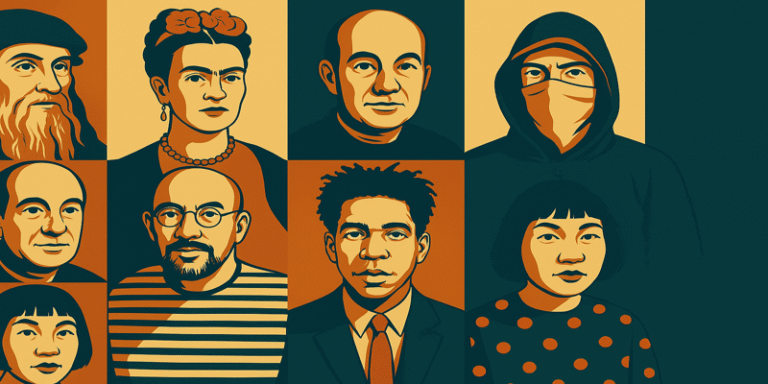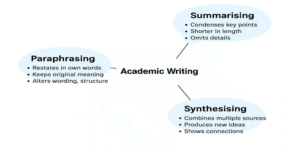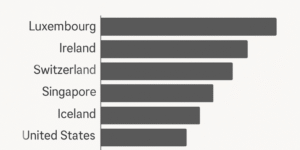Art is a powerful medium that reflects, critiques and shapes the societies in which it is created. Throughout history, artists have not only documented their times but also influenced politics, culture, and human thought. From Renaissance painters to modern conceptual artists, influential figures have challenged norms, pushed boundaries, and redefined the purpose and nature of art. This article explores several such artists from various periods and regions, whose work has had a profound impact on both art history and society.
Leonardo da Vinci (1452–1519)
Leonardo da Vinci is perhaps the most renowned figure of the Italian Renaissance, celebrated for his contributions to both art and science. His paintings, such as The Last Supper (1495–1498) and Mona Lisa (c.1503), are celebrated for their technical brilliance, use of perspective, and emotional depth. Beyond his art, da Vinci’s notebooks reveal deep investigations into anatomy, engineering, and nature, indicating a mind ahead of its time (Kemp, 2006).
Da Vinci’s holistic approach to knowledge exemplifies the Renaissance ideal of the “universal man” and has had a lasting influence on the integration of art and science. His legacy is preserved in both art history and modern interdisciplinary education (Clark, 1985).
Frida Kahlo (1907–1954)
Mexican artist Frida Kahlo is known for her striking self-portraits and exploration of identity, pain, and postcolonial themes. Despite personal hardships, including chronic illness and a turbulent marriage to Diego Rivera, Kahlo channelled her struggles into symbolic, emotive artworks that fuse Mexican folk traditions with surrealism (Tibol, 1993).
Kahlo’s influence extends beyond the art world into feminism and cultural studies. She challenged conventional beauty standards and patriarchal norms, making her an icon of female empowerment and resistance (Herrera, 2002). Her work is celebrated for its raw honesty and political significance.
Pablo Picasso (1881–1973)
Spanish painter and sculptor Pablo Picasso revolutionised 20th-century art through his innovation and experimentation. Co-founder of Cubism, Picasso broke with traditional perspective and representation, instead using geometric forms to depict multiple viewpoints simultaneously, as seen in Les Demoiselles d’Avignon (1907) (Chilvers, 2004).
Picasso’s work also reflects strong political themes, particularly in Guernica (1937), a powerful anti-war statement responding to the bombing of a Basque town during the Spanish Civil War. His artistic versatility and prolific output—spanning painting, sculpture, ceramics, and printmaking—cemented his reputation as one of the most influential artists of the modern era (Read, 2002).
Yayoi Kusama (b. 1929)
Japanese artist Yayoi Kusama is known for her immersive installations, use of polka dots, and exploration of mental health, infinity, and self-obliteration. Despite facing gender and racial discrimination, Kusama carved a place in the global art scene, influencing pop art, minimalism, and installation art (Munroe, 2012).
Her iconic Infinity Mirror Rooms and large-scale installations invite viewers into kaleidoscopic environments that challenge perceptions of space and self. Kusama’s work has also become culturally relevant in the era of social media and mental health awareness, highlighting the ongoing relevance of contemporary art (Tomkins, 2018).
Ai Weiwei (b. 1957)
Ai Weiwei is a Chinese artist and activist known for his conceptual works that critique state power, censorship, and human rights abuses. Trained in both traditional Chinese art and Western modernism, Ai uses sculpture, architecture, film and installations to convey his political messages (Smith, 2016).
One of his most notable works, Sunflower Seeds (2010), involved over 100 million hand-painted porcelain seeds, referencing Chinese industrial history and collective identity. Ai’s arrest and surveillance by the Chinese government further amplified his role as a symbol of artistic dissent and freedom of expression (Bishop, 2012).
Jean-Michel Basquiat (1960–1988)
Emerging from the New York graffiti scene, Basquiat rose to prominence in the 1980s with his bold, neo-expressionist works combining text, symbols, and figures. As a Black artist in a predominantly white art world, he used his platform to address racism, colonialism, and African diasporic identity (Mayer, 2005).
Basquiat’s art, such as Untitled (1981) and Irony of Negro Policeman (1981), merges raw emotion with historical references. His work remains influential in contemporary art, hip-hop culture, and discussions about race and representation in visual culture (Hoffman, 2002).
Banksy (active since the 1990s)
The anonymous British street artist Banksy has gained global recognition for his satirical and politically charged graffiti. Operating in public spaces, his stencilled works critique capitalism, war, and institutional authority. Pieces like Girl with Balloon and There Is Always Hope have become iconic symbols of resistance and social commentary (Ellsworth-Jones, 2012).
Banksy’s anonymity, combined with his use of humour and irony, blurs the lines between art and activism. Despite—or perhaps because of—his anti-establishment messages, his works have been embraced by mainstream art markets, sparking debates about commodification and authenticity in contemporary art (Lewisohn, 2008).
The Role of Artists in Society
Influential artists do more than create aesthetically pleasing works; they provoke thought, inspire change, and provide new ways of seeing the world. Whether by challenging oppressive regimes, questioning social norms, or introducing new techniques and perspectives, artists serve as catalysts for dialogue and transformation.
Art also plays an educational and therapeutic role. According to Arnheim (1974), visual perception is central to understanding human cognition, and art helps individuals process and articulate complex emotions and experiences. As society grapples with issues such as climate change, inequality, and mental health, art continues to offer a space for reflection and resistance.
From the Renaissance to contemporary times, influential artists have shaped not only the trajectory of art history but also the cultural, political, and social landscapes of their times. Whether through da Vinci’s scientific genius, Kahlo’s personal resilience, or Ai Weiwei’s political defiance, these figures highlight the enduring power of art to influence, inspire, and instigate change. Exploring the lives and legacies of these artists offers valuable insights into both the world around us and the possibilities of human creativity.
References
Arnheim, R. (1974) Art and Visual Perception: A Psychology of the Creative Eye. Berkeley: University of California Press.
Bishop, C. (2012) Artificial Hells: Participatory Art and the Politics of Spectatorship. London: Verso.
Chilvers, I. (2004) The Oxford Dictionary of Art and Artists. Oxford: Oxford University Press.
Clark, K. (1985) Leonardo da Vinci: An Account of His Development as an Artist. London: Penguin Books.
Ellsworth-Jones, W. (2012) Banksy: The Man Behind the Wall. London: Aurum Press.
Herrera, H. (2002) Frida: A Biography of Frida Kahlo. New York: HarperCollins.
Hoffman, F. (2002) Jean-Michel Basquiat. New York: Merrell.
Kemp, M. (2006) Leonardo da Vinci: The Marvellous Works of Nature and Man. Oxford: Oxford University Press.
Lewisohn, C. (2008) Street Art: The Graffiti Revolution. London: Tate Publishing.
Mayer, M. (2005) Basquiat. London: Merrell.
Munroe, A. (2012) Yayoi Kusama. New York: Whitney Museum of American Art.
Read, H. (2002) A Concise History of Modern Painting. London: Thames & Hudson.
Smith, K. (2016) ‘Ai Weiwei: Making the Invisible Visible’, Art Monthly, 392, pp. 4–7.
Tibol, R. (1993) Frida Kahlo: An Open Life. Albuquerque: University of New Mexico Press.
Tomkins, C. (2018) Off the Wall: A Portrait of Robert Rauschenberg. New York: Picador.









